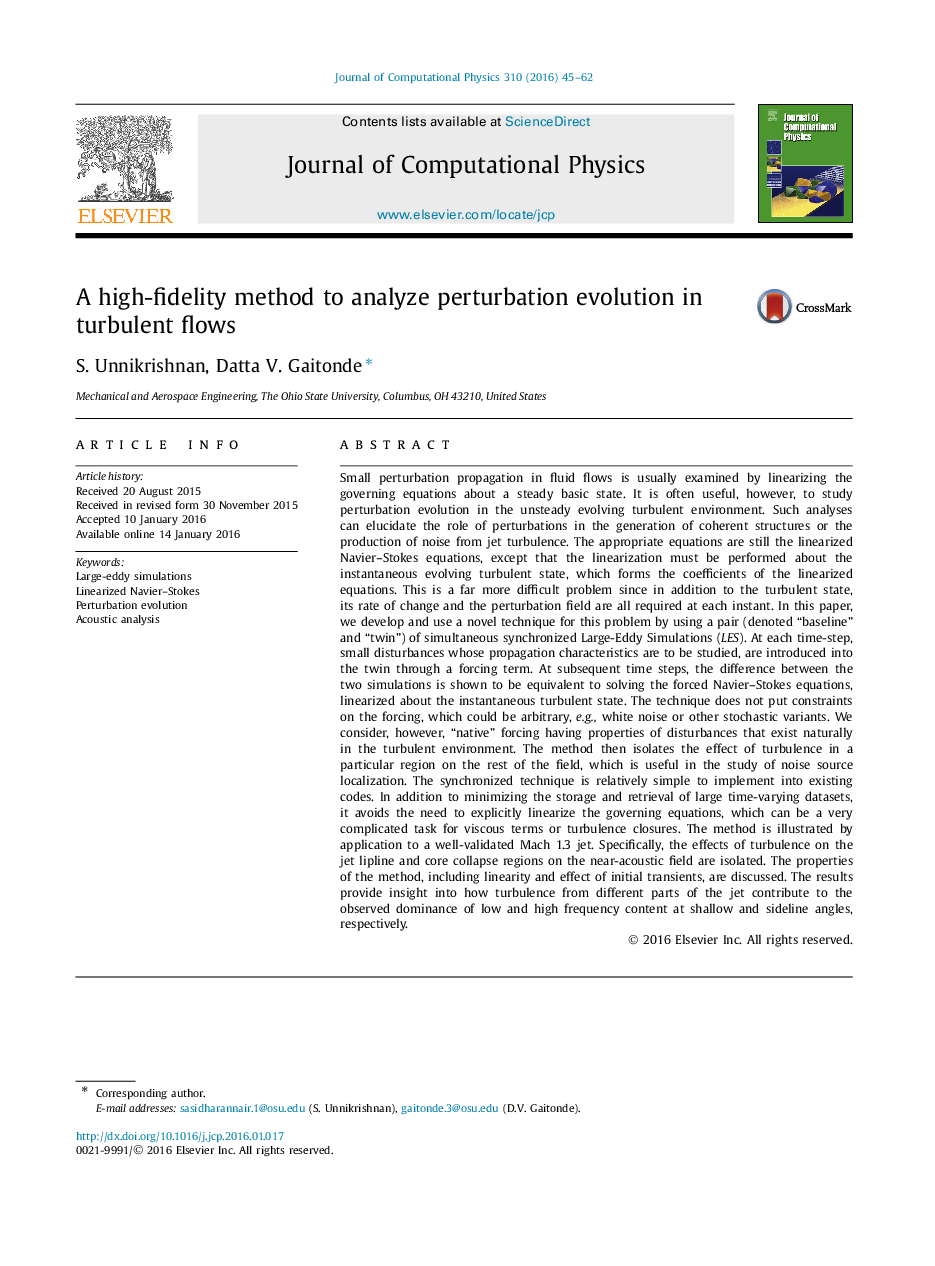| کد مقاله | کد نشریه | سال انتشار | مقاله انگلیسی | نسخه تمام متن |
|---|---|---|---|---|
| 6930443 | 867538 | 2016 | 18 صفحه PDF | دانلود رایگان |
عنوان انگلیسی مقاله ISI
A high-fidelity method to analyze perturbation evolution in turbulent flows
ترجمه فارسی عنوان
یک روش با وفاداری بالا برای تحلیل تحرک تحریف در جریان آشفته
دانلود مقاله + سفارش ترجمه
دانلود مقاله ISI انگلیسی
رایگان برای ایرانیان
کلمات کلیدی
موضوعات مرتبط
مهندسی و علوم پایه
مهندسی کامپیوتر
نرم افزارهای علوم کامپیوتر
چکیده انگلیسی
Small perturbation propagation in fluid flows is usually examined by linearizing the governing equations about a steady basic state. It is often useful, however, to study perturbation evolution in the unsteady evolving turbulent environment. Such analyses can elucidate the role of perturbations in the generation of coherent structures or the production of noise from jet turbulence. The appropriate equations are still the linearized Navier-Stokes equations, except that the linearization must be performed about the instantaneous evolving turbulent state, which forms the coefficients of the linearized equations. This is a far more difficult problem since in addition to the turbulent state, its rate of change and the perturbation field are all required at each instant. In this paper, we develop and use a novel technique for this problem by using a pair (denoted “baseline” and “twin”) of simultaneous synchronized Large-Eddy Simulations (LES). At each time-step, small disturbances whose propagation characteristics are to be studied, are introduced into the twin through a forcing term. At subsequent time steps, the difference between the two simulations is shown to be equivalent to solving the forced Navier-Stokes equations, linearized about the instantaneous turbulent state. The technique does not put constraints on the forcing, which could be arbitrary, e.g., white noise or other stochastic variants. We consider, however, “native” forcing having properties of disturbances that exist naturally in the turbulent environment. The method then isolates the effect of turbulence in a particular region on the rest of the field, which is useful in the study of noise source localization. The synchronized technique is relatively simple to implement into existing codes. In addition to minimizing the storage and retrieval of large time-varying datasets, it avoids the need to explicitly linearize the governing equations, which can be a very complicated task for viscous terms or turbulence closures. The method is illustrated by application to a well-validated Mach 1.3 jet. Specifically, the effects of turbulence on the jet lipline and core collapse regions on the near-acoustic field are isolated. The properties of the method, including linearity and effect of initial transients, are discussed. The results provide insight into how turbulence from different parts of the jet contribute to the observed dominance of low and high frequency content at shallow and sideline angles, respectively.
ناشر
Database: Elsevier - ScienceDirect (ساینس دایرکت)
Journal: Journal of Computational Physics - Volume 310, 1 April 2016, Pages 45-62
Journal: Journal of Computational Physics - Volume 310, 1 April 2016, Pages 45-62
نویسندگان
S. Unnikrishnan, Datta V. Gaitonde,
